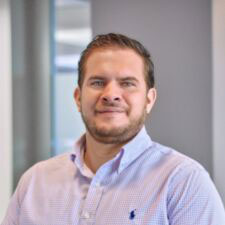It is the beginning of May, and as tenants in Puerto Rico are well aware, rents are due around this time. After almost two months of lockdown measures to mitigate the effects of the COVID-19 pandemic, many low-income renters find themselves in a difficult position to make payments on time. In the recent past, CNE has argued that a rent moratorium is needed, one that includes both a freeze on evictions (which has de facto come into effect through the suspension of these court orders in Puerto Rico) and a subsidy or direct assistance to renters, a measure also supported by advocates in the island. This latter proposal is important, since a total freeze on rent payments may leave landlords in a tight financial bind, rendering them unable to pay mortgages and other financial obligations.
How a rent assistance program is ultimately implemented is important, since an overly bureaucratic structure, or a program created “from scratch” might end up failing to reach renters expediently—the erratic and slow disbursement of the CARES Act stimulus checks in Puerto Rico is a good example. Given these difficulties, there is consensus among housing experts and advocates that the best way to implement a pandemic rent assistance program in the middle of an emergency is by expanding the Housing Choice Voucher program. This program, commonly referred to as Section 8 vouchers, is a housing rental subsidy administered by the Department of Housing and Urban Development (HUD). It provides vouchers to low-income households (defined as households with incomes lower than 50% of area median income, or AMI) to subsidize rents in the open market, with households paying up to 30% of their monthly income and the government paying the rest.
We carried out a rough calculation that yielded a conservative estimate of how much would be needed to expand the Housing Choice Voucher program, in order to provide pandemic rental assistance in Puerto Rico that meets the needs of its low-income renters. These were our findings:
Puerto Rico would need at least an additional $455 million to provide rental assistance for one year, in order to mitigate the effects of the COVID-19 pandemic on low-income renters.

* Source: 2018 5-year average PRCS and HUD income limits for 2020
** Source: HUD data on assisted housing
How did we arrive at this figure? Using data from the 2018 Puerto Rico Community Survey and HUD’s income limits for each municipality, we estimated the total number of low-income households that have incomes lower than 50% of AMI. We then used HUD data on assisted housing to determine the total number of housing units that receive rent subsidies from HUD, including Housing Choice vouchers, project-based Section 8, public housing, and Section 202, among others. We subtracted this number from the total number of households with incomes under 50% of AMI in Puerto Rico, to determine the total number of households who are not currently served by HUD’s rental assistance programs.
HUD data on assisted housing showed that the average per unit subsidy through the Housing Choice Vouchers program was $514 per month, in 2019. Multiplying this number by the total number of unsubsidized low-income households, yielded a monthly rental assistance gap of approximately $37.9 million, or $455 million for one year.
This analysis is part of a series of policy advocacy efforts performed by CNE’s Blueprint Initiative, in partnership with Habitat for Humanity Puerto Rico.


